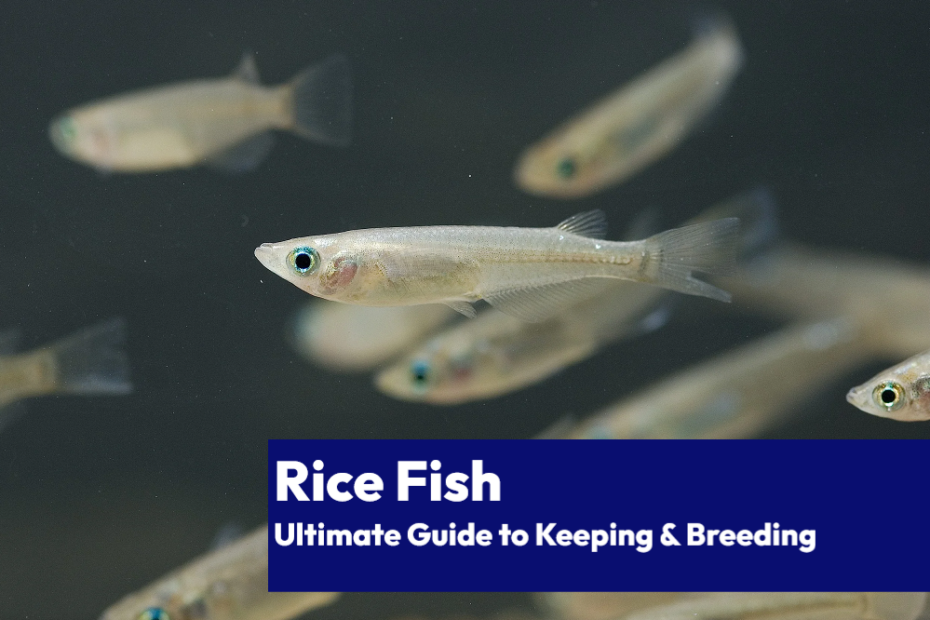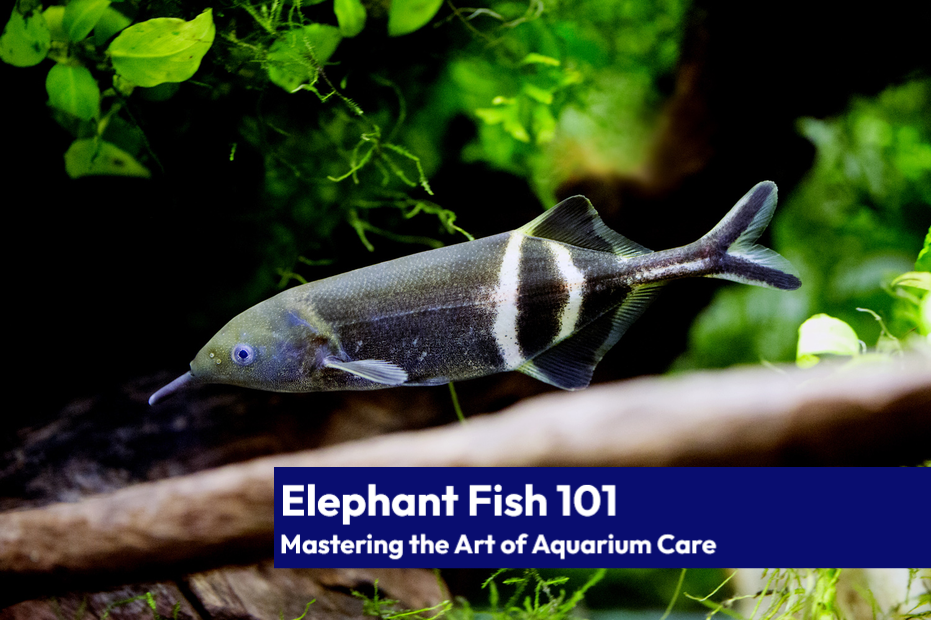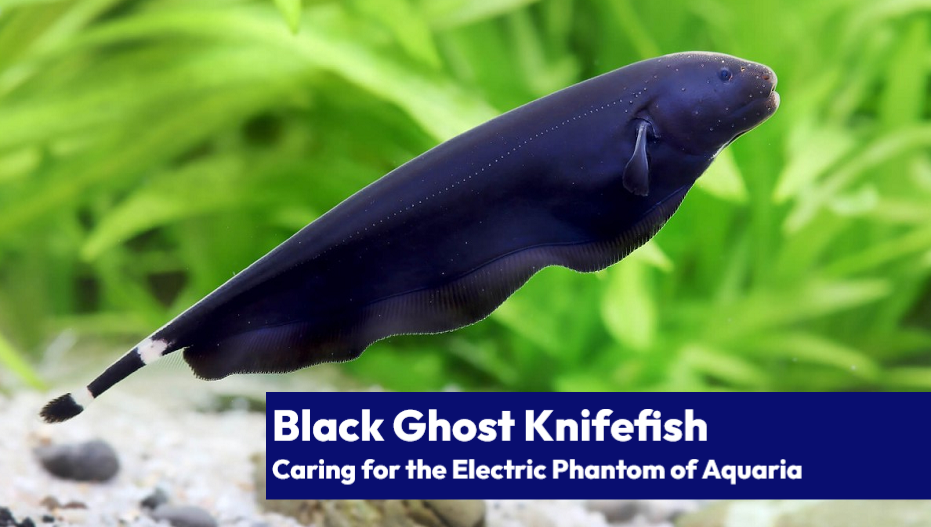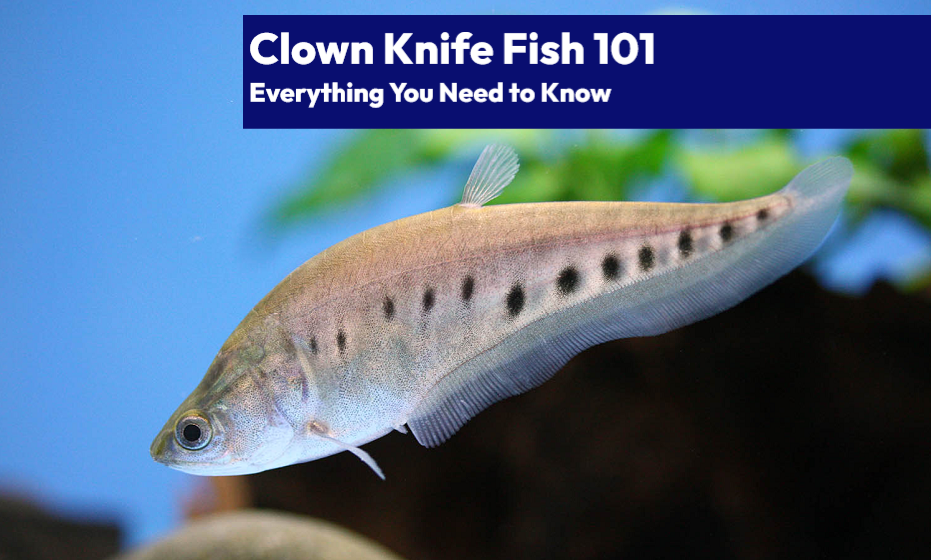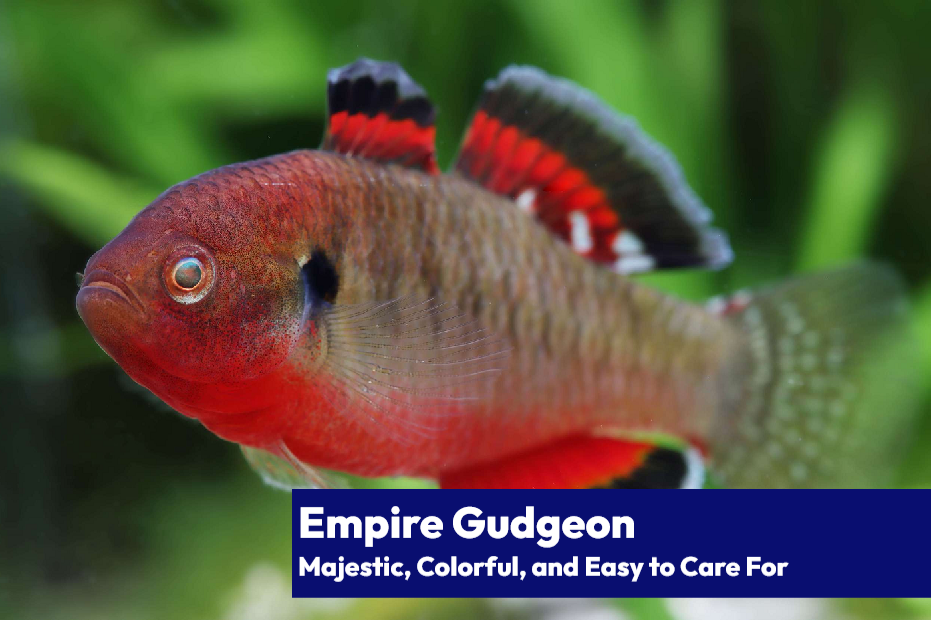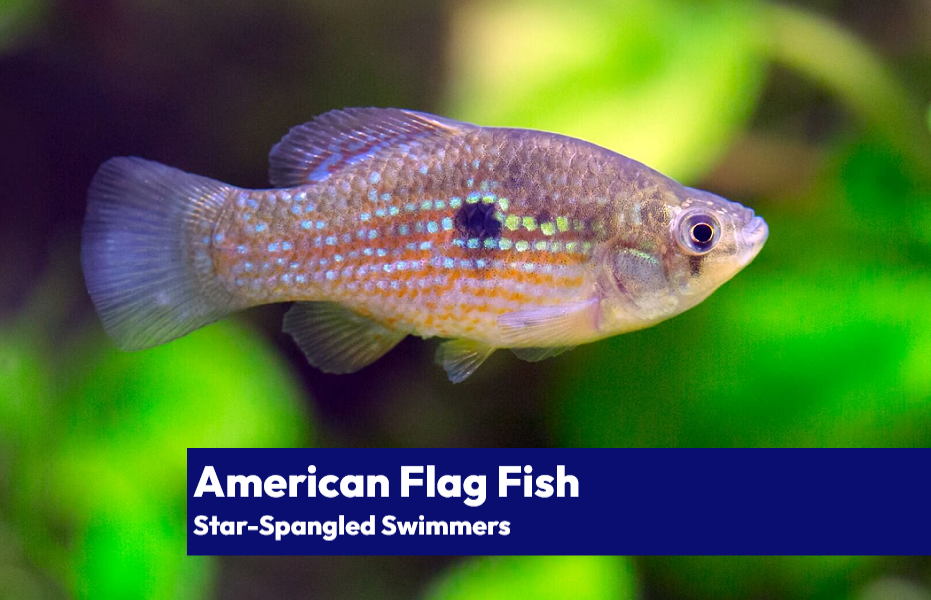Imagine a serene oasis, where tiny, iridescent gems dart among lush aquatic foliage, casting dappled shadows on the sandy floor below. These glistening jewels are none other than the captivating Japanese Rice Fish, an enchanting species that has captured the hearts of aquarists around the globe. These delightful swimmers are the stars of the underwater ballet, their mesmerizing, rhythmic movements transforming any aquarium into a living work of art.
So, dive in with us as we explore the fascinating world of Rice Fish and uncover the secrets to creating the perfect aquatic haven for these shimmering beauties!
| Care Data Point | Description |
|---|---|
| Scientific Name | Oryzias latipes |
| Adult Size | 1.2 inches (3 cm) |
| Lifespan | 3-5 years |
| Temperature Range | 68-78°F (20-25°C) |
| pH Range | 7.0-8.0 |
| Hardness Range | 5-20 dGH |
| Water Flow | Gentle to moderate |
| Tank Size | Minimum 10 gallons (38 liters) |
| Tank Setup | Planted tank with hiding spots and open swimming areas |
| Social Behavior | Peaceful, schooling fish |
| Tank Mates | Small, non-aggressive species like shrimp and other micro-fish |
| Diet | Omnivorous; high-quality flake food, live, and frozen foods |
| Breeding | Egg scatterer; separate breeding tank recommended |
Understanding Japanese Rice Fish: A Species Steeped in Tradition
Before setting up your aquarium, it’s crucial to understand the basics of the Japanese Rice Fish. Learning about their scientific classification, physical appearance, and natural habitat will help you make informed decisions about their care and maintenance.
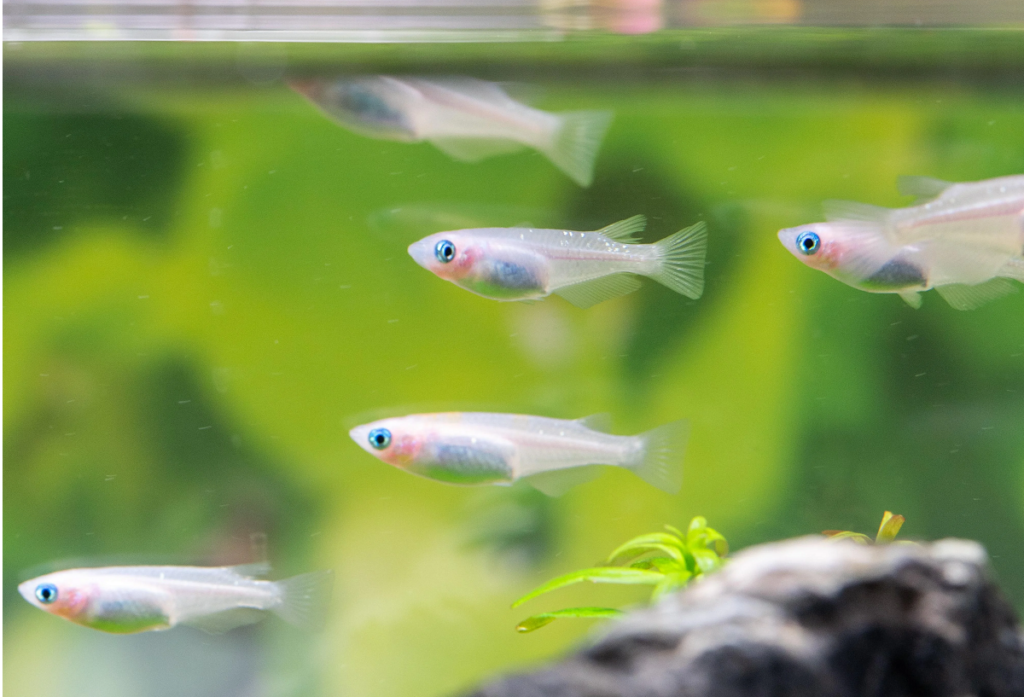
A Species with a Rich History
Scientific name: Oryzias latipes Classification: Family: Adrianichthyidae; Order: Beloniformes
The Japanese Rice Fish, also known as Medaka or Japanese killifish, is a small, freshwater fish native to East Asia. In Japan, these fish have been an integral part of the culture for centuries, featured in everything from traditional paintings to children’s songs.
Physical Attributes: Delicate Beauty in Small Packages
Japanese Rice Fish typically grow to about 1.5 inches (3-4 cm) in length. Their bodies are slim and elongated, with a slightly flattened belly. They come in various colors, including white, yellow, and even a striking orange-red. Some wild populations also exhibit beautiful iridescent blue or green hues.
Natural Habitat: An Inspiration for Aquarium Design
These fish inhabit shallow rice paddies, marshes, and slow-moving streams throughout East Asia, including Japan, Korea, and China. Their natural environment is characterized by clear water, dense vegetation, and a substrate of fine silt or sand.
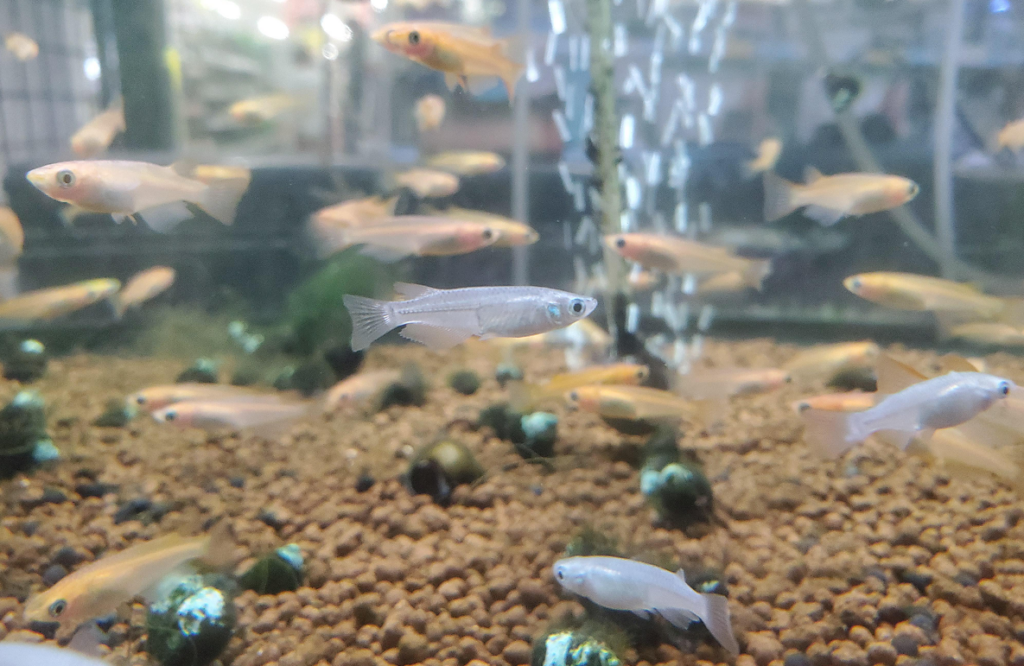
Social Butterflies of the Aquatic World
Japanese Rice Fish are peaceful, social creatures that prefer to live in groups. They are known for their active and playful behavior, making them an entertaining addition to any aquarium.
Setting up the Ideal Aquarium for Japanese Rice Fish: Creating a Home Away from Home
Now that we’ve covered the basics, it’s time to explore how to create the perfect environment for your Japanese Rice Fish. By mimicking their natural habitat, you’ll ensure that your fish feel comfortable and thrive in their new home.
Tank Size and Dimensions: Space to Swim and Explore
For a small group of 5-6 Japanese Rice Fish, a 10 gallon (38 liter) tank is the minimum recommended size. However, a 20 gallon (76 liter) tank or larger is ideal, as it provides ample swimming space and makes maintaining stable water conditions easier.
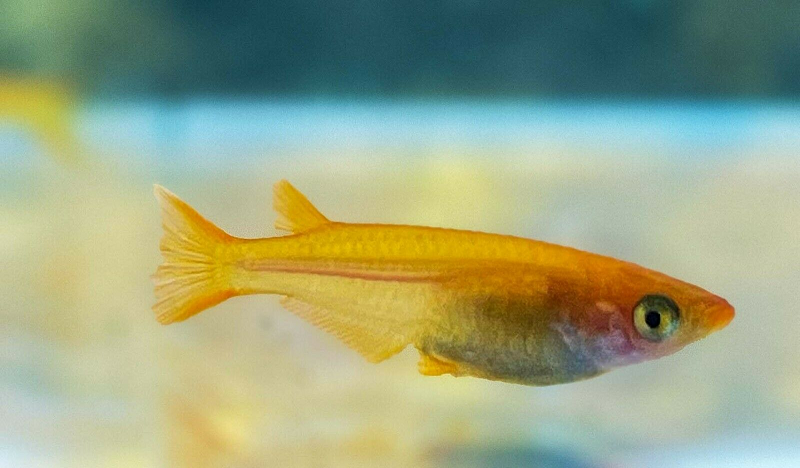
Water Parameters: A Delicate Balance
- Temperature: 68-78°F (20-25°C)
- pH: 6.5-7.5
- Hardness: 5-15 dGH
Japanese Rice Fish are relatively hardy, but it’s essential to maintain stable water conditions to keep them healthy. Monitor your water parameters regularly and use a heater and thermometer to ensure the temperature stays within the recommended range.
Filtration and Aeration: Clean and Oxygenated Water
A gentle filtration system is crucial for maintaining water quality. Choose a filter with adjustable flow settings, as Japanese Rice Fish prefer calmer water. Additionally, install an air pump to ensure proper oxygenation, particularly if your tank has a tight-fitting lid or if you live in a warmer climate.
Substrate and Decorations: A Natural Playground
To replicate their natural habitat, opt for a fine sand or silt substrate. You can also add smooth rocks, driftwood, and other natural decorations to create hiding spots and visual interest. Be sure to leave open swimming areas for your fish to explore.
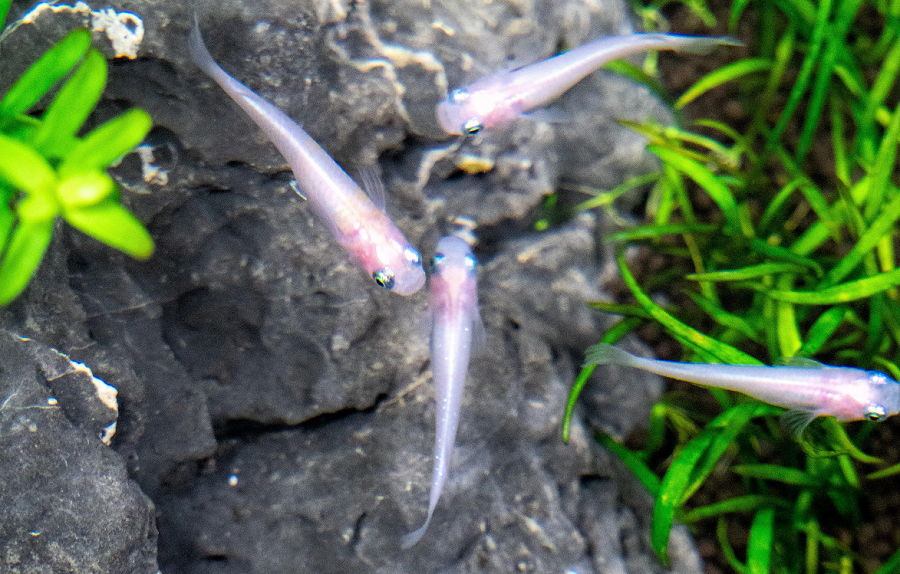
Live Plants Suitable for Japanese Rice Fish: A Lush Aquatic Garden
Including live plants in your aquarium is not only visually appealing, but also beneficial for water quality and your fish’s well-being. Choose plants that thrive in similar water conditions, such as:
These plants provide shelter, help reduce algae growth, and contribute to a more stable environment.
Lighting Requirements: A Balance Between Comfort and Beauty
Japanese Rice Fish do not have specific lighting requirements, but moderate lighting is generally recommended. Too much light may cause stress, while too little can hinder plant growth. Aim for around 8 hours of light per day, and consider using a timer to maintain a consistent day-night cycle.
Proper Diet and Feeding: Fueling Your Fish with Nutritious Meals
A balanced diet is vital for the health and well-being of your Japanese Rice Fish. By providing them with a variety of foods, you’ll ensure they receive all the necessary nutrients to thrive.
Types of Food: A Varied Menu for Happy Fish
Japanese Rice Fish are omnivores and will happily eat a mix of the following:
- High-quality flake or pellet food
- Freeze-dried or frozen foods, such as brine shrimp, daphnia, or bloodworms
- Live foods, like mosquito larvae or small insects
| Food Option | Benefits for Rice Fish | Popular Products |
|---|---|---|
| Live Brine Shrimp | Provides essential nutrients and stimulates natural hunting instincts, improving overall health and vitality. | San Francisco Bay Brand Hatchery Baby Brine Shrimp |
| Frozen Bloodworms | High in protein, these nutritious worms promote growth, color enhancement, and increased energy levels. | Hikari Bio-Pure Frozen Bloodworms |
| Live Daphnia | Promotes optimal digestion and nutrient absorption, while offering a high-quality, easily digestible source of protein. | Aquatic Foods Inc. Live Daphnia |
| High-Quality Flake Food | A convenient and nutritionally balanced staple diet, providing essential vitamins and minerals for overall health. | TetraMin Tropical Flakes |
| Micropellets | Specially designed for small fish, micropellets offer a complete and balanced diet that promotes growth and coloration. | Hikari Tropical Micro Pellets |
| Live Mosquito Larvae | Provides natural foraging opportunities and enhances the immune system, ensuring overall well-being and longevity. | Aquatic Foods Inc. Live Mosquito Larvae |
| Frozen Mysis Shrimp | High in omega-3 fatty acids, these shrimp boost the immune system and support healthy growth and development. | Hikari Bio-Pure Frozen Mysis Shrimp |
| Live Tubifex Worms | An excellent source of protein that promotes growth and coloration while encouraging natural foraging behavior. | Aquatic Foods Inc. Live Tubifex Worms |
| Spirulina Flakes | Rich in antioxidants and essential nutrients, spirulina flakes support a healthy immune system and vibrant coloration. | Omega One Super Color Flakes |
| Freeze-Dried Krill | Offers a highly palatable source of protein and essential fatty acids, promoting optimal growth, color, and overall health. | Tetra JumboKrill Freeze-Dried Krill |
Feeding Schedule: Consistency is Key
Feed your fish 2-3 times a day, offering only as much food as they can consume within a few minutes. Overfeeding can lead to poor water quality and health issues.
Pro Tip: Occasionally supplementing your fish’s diet with blanched vegetables, like spinach or zucchini, can provide additional nutrients and variety.
Tank Mates for Japanese Rice Fish: Building a Peaceful Community
Choosing suitable tank mates is crucial for maintaining a harmonious environment in your aquarium. Here are some factors to consider when selecting companions for your Japanese Rice Fish.
Compatible Species: Friends Who Get Along
Japanese Rice Fish are peaceful and can coexist with other similarly-sized, non-aggressive species. Some potential tank mates include:
- Small tetras, like neon or ember tetras
- Guppies
- Endler’s livebearers
- Dwarf rasboras
- Small catfish, such as Corydoras or Otocinclus
| Compatible Tankmate | Description as Potential Tankmate |
|---|---|
| Neon Tetras | Small, peaceful schooling fish that add a vibrant splash of color to the aquarium. |
| Ember Tetras | Tiny, fiery-red fish that are calm and thrive in a community setting alongside rice fish. |
| Cherry Shrimp | Peaceful, colorful invertebrates that aid in cleaning the tank and won’t harass your rice fish. |
| White Cloud Mountain Minnow | Hardy and peaceful fish with stunning iridescent colors, well-suited to a rice fish community. |
| Pygmy Corydoras | Small, peaceful bottom dwellers that help keep the substrate clean and add activity to the tank. |
| Guppies | Beautiful, live-bearing fish with a peaceful nature, ideal for a community setup with rice fish. |
| Endler’s Livebearers | Small, colorful fish that are easy to care for and create a lively atmosphere in the tank. |
| Celestial Pearl Danios | Tiny, strikingly patterned fish that share similar water requirements and peaceful temperament. |
| Otocinclus Catfish | Peaceful algae eaters that are efficient cleaners and get along well with rice fish. |
| Amano Shrimp | Large, peaceful invertebrates that help control algae and make excellent tankmates for rice fish. |
| Harlequin Rasboras | Attractive schooling fish known for their peaceful nature and compatibility with rice fish. |
| Dwarf Gourami | Small, colorful labyrinth fish that are generally peaceful and can coexist with rice fish. |
| Zebra Danios | Active, hardy fish that are compatible with rice fish and add a playful energy to the aquarium. |
| Ghost Shrimp | Transparent, peaceful invertebrates that help clean the tank and provide interesting behavior. |
| Kuhli Loaches | Unique, eel-like bottom dwellers that are peaceful and add a touch of intrigue to the tank. |
Incompatible Species: Avoiding Trouble
Avoid keeping Japanese Rice Fish with larger, aggressive species, such as cichlids, angelfish, or large barbs. These fish may see the smaller rice fish as prey or may cause stress and injury.
Breeding Japanese Rice Fish: A Rewarding Experience
Breeding Japanese Rice Fish can be a fun and fulfilling aspect of the hobby. With a bit of patience and the right conditions, you can raise a new generation of these charming fish.
Identifying Males and Females: Telling Them Apart
Males are generally more slender and have a more vibrant coloration, while females are rounder and duller in color. The anal fin on males is also more pointed than that of females.
Breeding Setup and Conditions: Setting the Stage for Romance
To encourage breeding, set up a separate tank or partition off a section of your existing tank. Include plenty of plants or spawning mops for the fish to lay their eggs on. Maintain the water temperature at the higher end of their preferred range (around 75-78°F or 24-25°C) and ensure the water quality is pristine.
Spawning Behavior and Egg-Laying: Witnessing the Magic
Japanese Rice Fish will engage in a courtship dance, with the male pursuing the female before fertilization occurs. The female will then lay her eggs, attaching them to plants or other surfaces with adhesive filaments. This process can last several days, with the female laying 10-20 eggs per day.
Raising Fry (Baby Fish): Nurturing the Next Generation
Once the eggs are laid, it’s best to separate them from the adult fish to prevent predation. The eggs will hatch in about 7-10 days, and the fry will begin swimming shortly after. Feed them infusoria or powdered fry food until they are large enough to accept finely crushed flake food or baby brine shrimp.
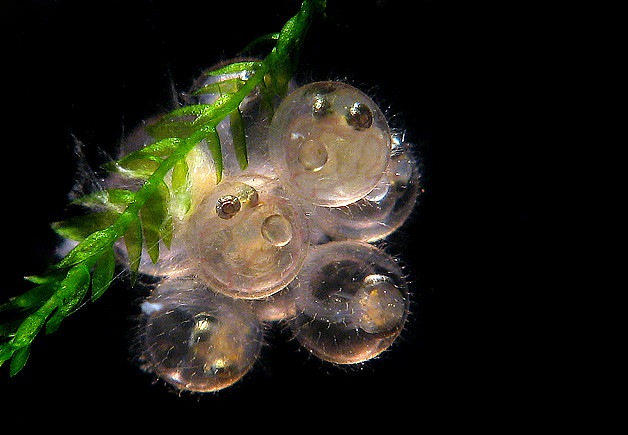
Maintain Consistent Care
As the rice fish fry continue to grow and mature, maintain consistent care by providing a high-quality diet, stable water parameters, and regular water changes. With proper care, rice fish can reach maturity in about 2-3 months, at which point they may begin breeding themselves.
Fun Fact: Japanese Rice Fish have been studied extensively in the field of genetics, and even traveled to space on a 2012 mission aboard the International Space Station!
Common Health Issues and Treatment: Keeping Your Fish Healthy and Happy
Like all aquarium fish, Japanese Rice Fish can encounter health issues. By recognizing signs of illness and taking preventative measures, you can keep your fish in top shape.
Identifying Signs of Illness: Know When Something’s Wrong
Common signs of illness in Japanese Rice Fish include:
- Lethargy or loss of appetite
- Clamped fins or erratic swimming
- Changes in color or the appearance of spots or lesions
Preventative Measures: An Ounce of Prevention
To minimize the risk of health issues, maintain proper water quality, avoid overfeeding, and quarantine new fish before adding them to your aquarium.
Common Diseases and Their Treatments: Remedies for Ailing Fish
Some common diseases affecting Japanese Rice Fish are:
- Ich (white spot disease): Treat with an over-the-counter ich medication or increase the water temperature gradually to 86°F (30°C) for a week.
- Fin rot: Treat with an antibiotic medication specifically designed for fin rot, and improve water quality.
- Fungal infections: Use antifungal medications as directed and maintain optimal water conditions.
If you’re unsure about a diagnosis or treatment, consult an aquatic veterinarian or experienced fish keeper for guidance.
Japanese Rice Fish Conservation and Legal Considerations: A Responsible Hobbyist
As a responsible hobbyist, it’s important to stay informed about the conservation status of the species you keep and adhere to any legal restrictions.
Conservation Status: Protecting Our Natural World
The Japanese Rice Fish is currently listed as “Least Concern” on the IUCN Red List, meaning it is not considered to be at immediate risk of extinction. However, habitat loss and pollution are ongoing threats to wild populations.
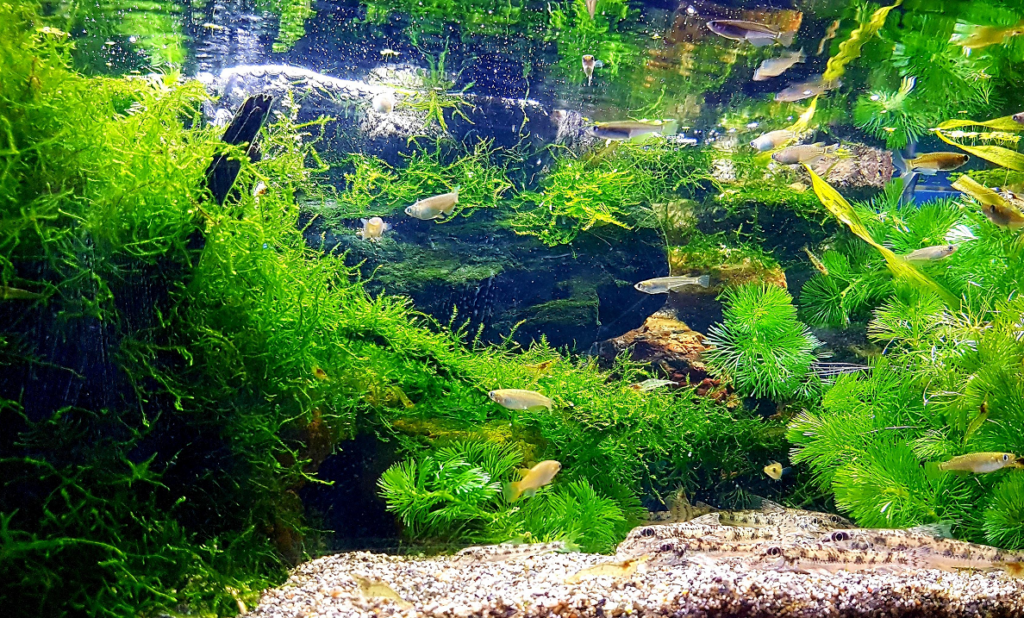
Legal Restrictions: Follow the Rules
In some regions, keeping or importing Japanese Rice Fish may be subject to restrictions or permits. Be sure to research and comply with any local regulations before acquiring these fish.
Responsible Hobbyist Practices: A Commitment to Conservation
When purchasing Japanese Rice Fish, choose a reputable breeder or retailer to ensure you are not contributing to the depletion of wild populations. Additionally, never release your fish into local waterways, as they can become invasive and harm native ecosystems.
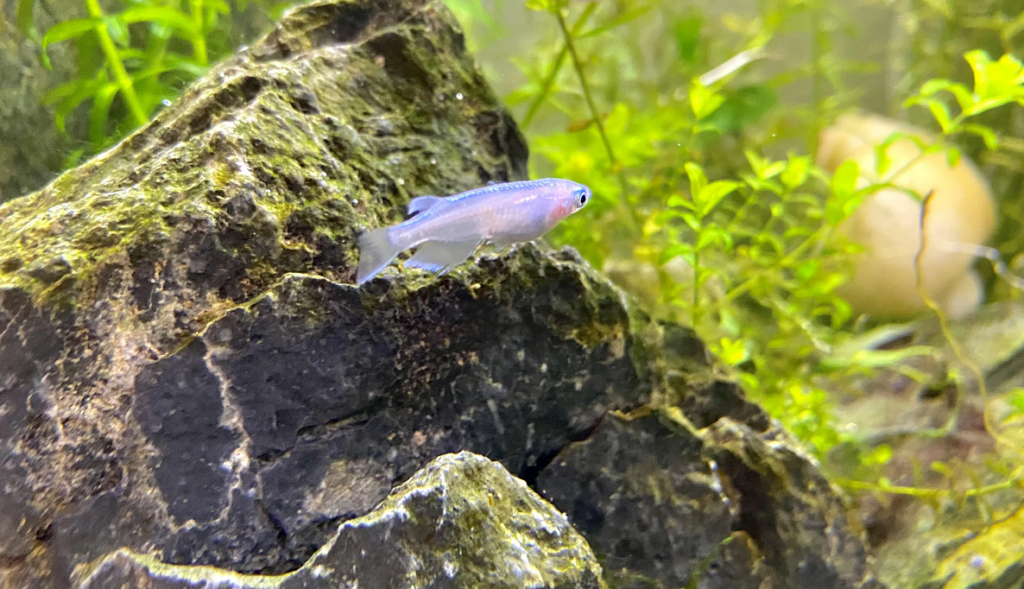
Frequently Asked Questions: Your Curiosities Addressed
In this section, we tackle some common misconceptions and questions about Japanese Rice Fish, helping you troubleshoot issues and expand your knowledge.
- Do Japanese Rice Fish need a heater? Although they can tolerate a wide range of temperatures, a heater is recommended to maintain stable conditions, especially if your home experiences significant temperature fluctuations.
- Can I keep Japanese Rice Fish in an outdoor pond? Yes, Japanese Rice Fish can be kept in outdoor ponds, provided the water temperature remains within their preferred range and there is ample cover and vegetation. However, be aware that they may become prey to birds or other predators.
- How long do Japanese Rice Fish live? With proper care, these fish can live up to 3-5 years in captivity. Maintaining optimal water conditions, a balanced diet, and a stress-free environment will contribute to their longevity.
- Why are my Japanese Rice Fish hiding all the time? Hiding can be a sign of stress, potentially caused by factors such as inadequate cover, aggressive tank mates, or poor water quality. Assess your aquarium setup and address any issues to help your fish feel more secure.
Top 10 Popular Types and Variants of Rice Fish: Exploring the Diversity
Japanese Rice Fish are not the only fascinating species within the genus Oryzias. There are several other types and variants of rice fish that have become popular among aquarists for their unique appearances and characteristics. In this section, we will explore the top 8 popular types and variants of rice fish, offering a glimpse into the diversity of these amazing creatures.
1. Oryzias latipes (Japanese Rice Fish)
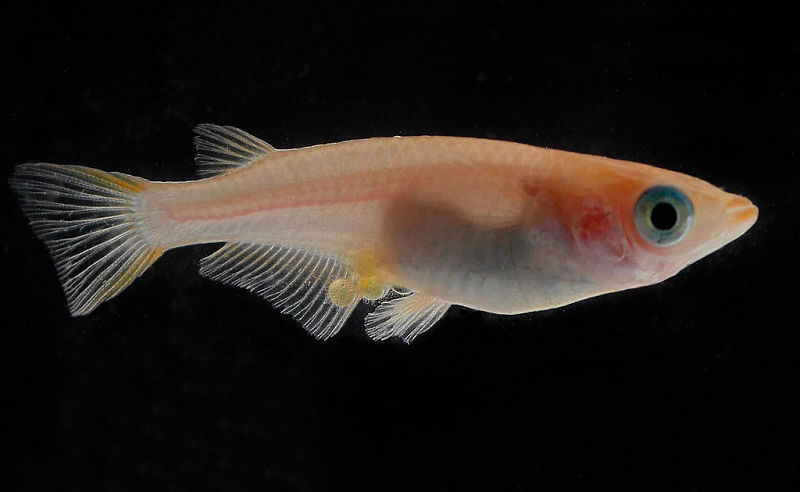
As discussed earlier, the Japanese Rice Fish is a popular species in the aquarium hobby due to its hardiness, peaceful nature, and attractive appearance. This species comes in various colors, such as white, yellow, orange-red, and even iridescent blue or green.
2. Oryzias woworae (Daisy’s Rice Fish)
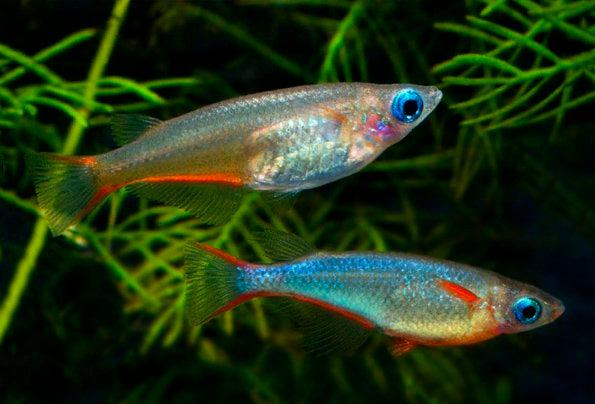
Native to Sulawesi, Indonesia, Daisy’s Rice Fish is a small, colorful species that has gained popularity among aquarists. Males display vibrant blue and red markings, while females are more subdued in color.
3. Oryzias mekongensis (Mekong Rice Fish)
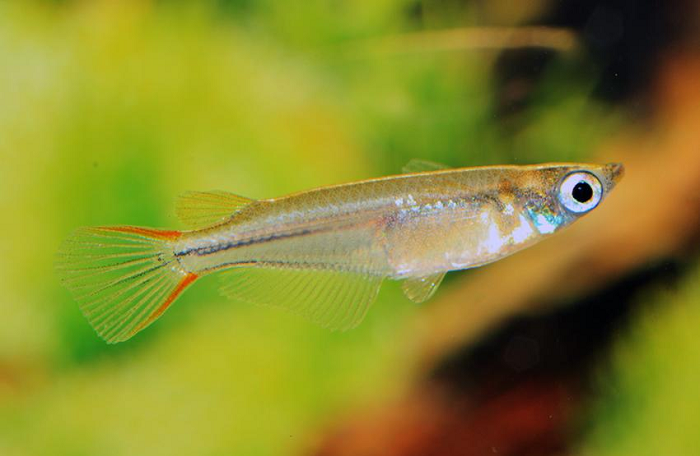
The Mekong Rice Fish hails from the Mekong River basin in Southeast Asia. This species is slightly larger than the Japanese Rice Fish and is known for its attractive, iridescent coloration, which can range from green to blue.
4. Oryzias melastigma (Blackline Rice Fish)
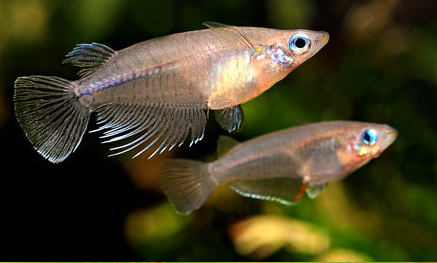
Originating from India and Bangladesh, the Blackline Rice Fish is characterized by a distinct black line that runs along the lateral line of its body. This striking feature sets it apart from other rice fish species and makes it a sought-after addition to home aquariums.
5. Oryzias minutillus (Dwarf Rice Fish)
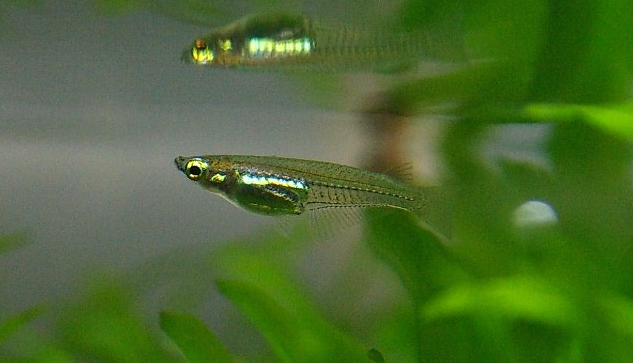
As its name suggests, the Dwarf Rice Fish is one of the smallest species in the genus, reaching a maximum size of just 1 inch (2.5 cm). This tiny species is native to the Philippines and is known for its peaceful demeanor and ability to thrive in small aquariums.
6. Oryzias celebensis (Celebes Rice Fish)
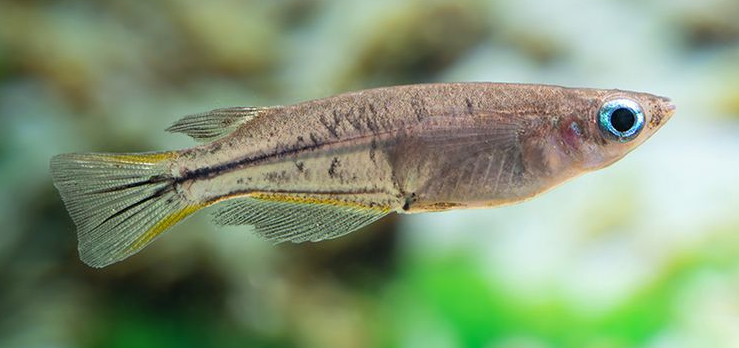
The Celebes Rice Fish is native to the island of Sulawesi in Indonesia. This species features a silvery body with a dark stripe along its side, making it a visually striking addition to an aquarium.
7. Oryzias dancena (Blue Danio Rice Fish)
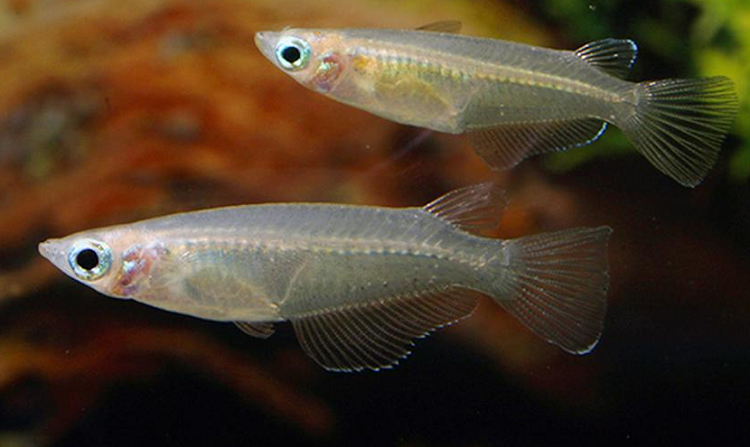
Originating from South and Southeast Asia, the Blue Danio Rice Fish is known for its attractive blue coloration and bold markings. Its active swimming behavior and peaceful nature make it a popular choice among aquarists.
8. Oryzias marmoratus (Marbled Rice Fish)
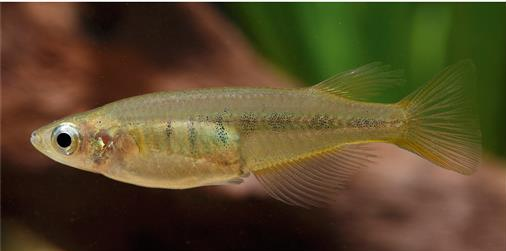
This interesting species is characterized by its marbled pattern and originates from the Philippines. The Marbled Rice Fish is a hardy species that can adapt to a wide range of water conditions, making it an excellent choice for beginners.
The History and Origins of Rice Fish: A Journey Through Time and Space
Rice fish, belonging to the genus Oryzias, are fascinating creatures that have captivated the interest of aquarists and scientists alike. In this article, we will delve into the history and origins of rice fish, exploring their geographical range and the significant figures involved in their discovery and classification. Along the way, we will uncover some unique and fun facts about these amazing fish.
The Geographical Distribution of Rice Fish: Across Continents and Islands
Rice fish are primarily distributed throughout Asia, with some species found as far west as India and Bangladesh, and as far east as the Philippines and Japan. Their habitats include freshwater ponds, marshes, and rice paddies, often in slow-moving or stagnant waters. Interestingly, some species, like the Celebes Rice Fish (Oryzias celebensis), can also be found in brackish water habitats.
Asia: The Cradle of Rice Fish Diversity
The Asian continent, particularly Southeast Asia, is home to the majority of rice fish species. Countries such as Indonesia, Malaysia, Myanmar, and Thailand boast a diverse array of rice fish, each adapted to their specific environments.
The Japanese Connection: Oryzias latipes
The Japanese Rice Fish (Oryzias latipes) is perhaps the most well-known species within the genus. Native to Japan, Korea, and parts of eastern China, this hardy species has adapted to a variety of freshwater habitats, including rice paddies, ponds, and streams.
The Discovery and Classification of Rice Fish: A Tale of Science and Exploration
The history of rice fish discovery and classification is intertwined with the lives and work of several prominent ichthyologists, whose studies have shed light on the fascinating world of these aquatic creatures.
The Father of Rice Fish Taxonomy: Carl Peter Thunberg
Swedish naturalist Carl Peter Thunberg (1743-1828) is credited with the discovery and initial classification of the Japanese Rice Fish. In 1782, Thunberg described the species and named it Cyprinus latipes. It wasn’t until later that the fish was reclassified into the genus Oryzias, where it remains today.
The Genus Oryzias: Jordan and Snyder’s Contribution
American ichthyologists David Starr Jordan (1851-1931) and John Otterbein Snyder (1867-1943) played a significant role in the classification of rice fish species. In 1906, they proposed the genus Oryzias, which now encompasses more than 30 species.
The Modern Era: Ongoing Research and Discovery
As more rice fish species have been discovered over time, their classification has been revised and updated to reflect new scientific knowledge. Researchers continue to uncover new species and document the unique characteristics of each, contributing to our understanding of rice fish diversity and biology.
Final Thoughts
And there you have it, dear aquarists – your treasure map to the enchanting realm of the Japanese Rice Fish! With the knowledge you’ve gleaned from this guide, you’re now ready to embark on a magical journey through the verdant underwater forests, guiding your iridescent, finned friends towards a life of aquatic bliss.
So, go forth and create a mesmerizing oasis, where the shimmering Rice Fish dance and weave their silvery trails through the aquatic tapestry, filling your heart with wonder and delight!

Tim Priest, a renowned aquarium expert with over 15 years of experience in aquatic gardening and fish education, is dedicated to helping enthusiasts create stunning and thriving aquatic environments. As the founder of LearnTheAquarium.com, Tim shares his wealth of knowledge, passion, and expertise through engaging articles, educational resources, and personalized advice.
Discover the secrets to creating captivating underwater landscapes and maintaining healthy aquatic ecosystems. Join Tim on an exciting journey and let your aquarium adventure begin!
